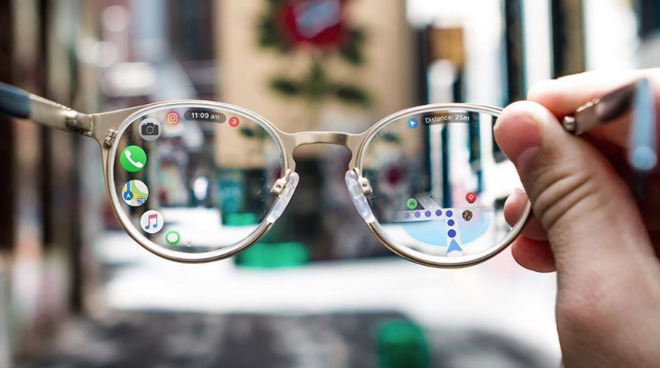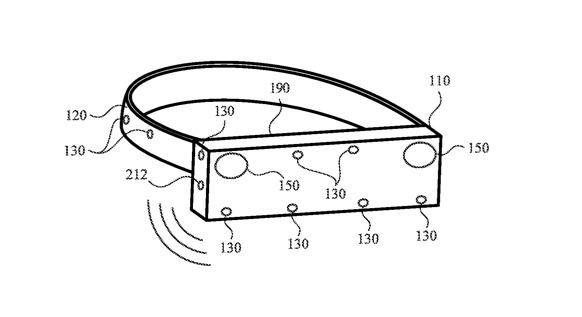An array of sensitive microphones in "Apple Glass" may detect audio that's difficult to hear, or to precisely locate, and direct the wearer where to look.

"Apple Glass" may point users toward where sounds are originating (source: Angelo Libero
Apple has previously applied for patents regarding sound quality in "Apple Glass," and making 3D audio for it. A newly-revealed patent application shows that Apple is also looking at what "Apple Glass" can do with the audio its microphones hear.
"Audio-Based Feedback for Head-Mountable Device," is concerned with detecting sounds, and then informing the wearer of them. That's if the device has these microphones -- the patent is careful not to say that "Apple Glass" or any specific device will have them, only that they could.
"A head-mountable device can include multiple microphones for directional audio detection," it says. "The head-mountable device can be configured to provide visual outputs based on audio inputs by displaying an indicator on a display based on a location of a source of a sound."
So if "Apple Glass" has "multiple microphones for capturing audio information (e.g., sounds) from multiple sources that are located in different directions," then it could process what it hears. While the patent application does not go into details, the implication is that at the very least, the "Apple Glass" display could show a notification when a particular sound is detected.

Detail from the patent showing microphones facing in different directions
What may be more useful in certain applications is that the device's microphones are likely to be rather more powerful than the wearer's own ears. Wearing "Apple Glass," they could be notified of sounds they simply could not hear unaided.
Plus, because there are an array of microphones facing different directions, "Apple Glass" could highly accurately calculate where a given sound originates. They could "rendered with visual outputs" what Apple describes as "indicators directing the user to the source of the sound."
"This can allow the user to correctly and readily identify the location of the source, even when the user is not readily able to hear the sound independently of the head-mountable device," says the patent. "By further example, the detected audio inputs can be rendered with audio outputs that emphasize (e.g., amplify) certain sounds over others to help the user distinguish between different sounds."
This patent is credited to three inventors -- Killian J. Poore, Stephen E. Dey, and Trevor J. Ness. Each of these also worked together on a previous patent application to improve how users might see better in low light using "Apple Glass."